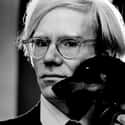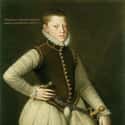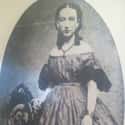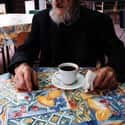-
(#1) Andy Warhol
- Dec. at 58 (1928-1987)
Illustrator, writer, and director Andy Warhol was famous during the '60s for pushing aesthetic boundaries and challenging artistic norms, but he was also reportedly quite the hoarder. Warhol kept "time capsules" during the last years of his life, which were essentially boxes full of random items. After Warhol's death in 1987, executors of his estate discovered over 600 time capsules, containing half a million objects. Warhol held on to "bills he had not yet paid... junk mail, even [an] old pizza crust... [He] put dates on them."
In his journals, Warhol wrote that he had a hard time throwing things away. He may have believed that one day the things he kept would be worth something, including one of the leaking cans of Campbell's soup.
-
(#11) Stanley Kubrick
- Dec. at 70 (1928-1999)
Nine years after Stanley Kubrick's death in 1999, his widow asked author and documentarian Jon Ronson to sort through the thousands of boxes her husband left behind. Kubrick's "boxes" were labeled, organized with precision, and included items from throughout the filmmaker's career. Ronson found footage and pictures from Kubrick's movies, including Eyes Wide Shut and Full Metal Jacket, as well as personal notes and newspaper clippings. Ronson chronicled what he called "the rhythm of genius" as he explored the contents of Kubrick's collection in the documentary Stanley Kubrick's Boxes. After Ronson was done with the items, he incinerated many of them, per Kubrick's instructions.
The knowledge that Kubrick was a hoarder gave his fans hope long before his death, especially as the filmmaker became more reclusive and erratic. One reporter wrote in 1997 that it was good news that "that Kubrick is a hoarder ... There is an extensive archive of material at his home in Childwick Bury. When that is eventually opened, we may get close to understanding the tangled brain which brought to life HAL, the [Clockwork Orange] Droogs and Jack Torrance." Kubrick also kept volumes and volumes of books, including a room full of nothing but works on Napoleon.
-
(#2) The Collyer Brothers Were Killed By Their Hoarded Items
During the 1930s and '40s, Homer and Langley Collyer lived in a brownstone in Harlem, where they collected massive amounts of junk. Born during the 1880s, the brothers lived in the home with their mother until she died in 1929. Homer and Langley were both college educated and remained in touch with the outside world until Homer had a stroke in 1932. Homer was left legally blind, and Langley quit his job to care for his brother. The two became increasingly isolated. Homer's health continued to deteriorate. He was eventually unable to move due to arthritis, but he never sought medical help. The brothers had no income, got water from local parks, and rigged their car to provide them with electricity. Langley only left the apartment at midnight to shop and run errands.
In 1947, neighbors called the police to report a putrid smell coming from the Collyer home. When the authorities arrived, they had to enter the residence through a window because the door was barricaded by debris. When a policeman finally got into the Collyer home, he found Homer Collyer's body. There were rumors that Langley fled, but three weeks later, authorities also discovered his body in the apartment. Langley was only ten feet away from Homer, but with the amount of debris in the home, it took weeks to find him. Authorities theorized that Langley was crawling through one of the tunnels of junk in the apartment when it collapsed, killing him and leaving Homer alone and helpless. Homer most likely died of starvation after Langley was no longer able to care for him.
As the Collyer brother's home was emptied, authorities sifted through over a hundred of tons of junk. They found jars of human organs (their father was a doctor, and they likely inherited them from him), thousands of books, a fold-top horse carriage, musical instruments, yards of fabric, and a car chassis, among many other items. The brownstone was in such horrible condition that it was torn down a few months after the Collyer brothers' deaths. There is now a small park named for them atop the site of their former home.
-
(#9) Rudolf II, Holy Roman Emperor
- Dec. at 59 (1552-1612)
Holy Roman Emperor Rudolf II (1552-1612) was an avid collector of art and other curiosities, something he had in common with his uncle, Archduke Ferdinand II of Austria (1529-1595). Both men were considered great patrons of the arts as well and collectors of "arms and armour, coins, books and manuscripts, portraits, and masterpieces of fine craftsmanship."
Ferdinand's collection was much more organized than Rudolf's and included musical instruments, clocks, locks, and animal items ranging from shark teeth to stuffed birds. Rudolf's "unsystematic cabinet of curiosities" was far less meticulously organized and included bronze and stone works, scientific instruments, coins, books, and drawings, among countless other items. Rudolf kept plants and animals, too, and was said to have had Europe's most extensive collection of the day.
Rudolf may have been influenced by his uncle, or they may have been engaged in a competition of sorts, but both the Holy Roman Emperor and the Archduke of Austria were able to take advantage of their positions and indulge their curious natures. Rudolf reached a point of mania when it came to acquiring new items, perhaps to ward off depression or boredom.
-
(#6) Ida Mayfield Wood Hoarded Everything—Including Cash
When Ida Wood's sister, Mary Mayfield, took ill and died in 1931, Ida's cries for help were the first contact the 93-year-old woman made with the outside world for decades. Ida lived in her room at the Herald Square Hotel with her sister for 24 years but needed help after Mary lost consciousness on March 5, 1931. When hotel and rescue personnel entered the room, they found "yellowed newspapers, cracker boxes, balls of used string, stacks of old wrapping paper and several large trunks," items the two collected during their years of reclusiveness. They paid all of their bills in cash, rarely allowed maids to enter, and requested bacon, eggs, and coffee daily from the bellhop. It was clear to everyone who came into contact with Ida that she hadn't bathed in years.
What was even more puzzling about Ida and her sister's lifestyle was Ida's claim that they had no money. In their room, there were piles of cash as well as jewels and paperwork for stocks and bonds, indicating that they were quite wealthy. Lawyer William O'Brien decided to investigate their background. He discovered that Ida Wood had been married to Benjamin Wood, a noted businessman and socialite in New York City. Benjamin Wood was addicted to gambling and Ida developed tricks to keep his addiction in line, including taking all of his winnings. After her husband died in 1900 and the 1907 financial crisis hit, she cashed in all of her possessions and checked into the Herald Square Hotel.
Ida was declared incompetent in 1931 and was moved from her room. When her family searched the apartment, they found trunks full of "the finest lace from Ireland, Venice and Spain; armfuls of exquisite gowns, necklaces, watches, bracelets, tiaras and other gem-encrusted pieces; several $1,000, $5,000, and $10,000 gold certificates dating back to the 1860s... [and] a diamond necklace worth $40,000."
The story of Ida Wood only got more interesting after her death in 1932. Investigators discovered that her surname wasn't Mayfield; her real name was Ellen Walsh. She was the daughter of an Irish immigrant, not a member of a noteworthy southern family. Ida lied to get the attention of her future husband, and it worked.
-
(#8) Edmund Trebus
- Dec. at 83 (1918-2002)
Edmund Trebus achieved fame after appearing on the British television show Life of Grime in 1999. As a hoarder for more than 30 years, Trebus had filled a five-bedroom house with junk, and his neighbors complained about rats and rotting trash in his yard. Trebus, a Polish war veteran, had also been living in his house without water and electricity, unable to take a bath or sleep in his bed. Two years after his yard was cleared by six men over "30 days using five large trucks and 11 skips," Trebus appeared on a second episode of the show, again with his yard and house filled with garbage.
Trebus's hoarding reportedly began during the 1960s. He had rooms full of vacuum cleaners and cameras. Over time, his wife and children left, as his collection of items continued to grow. In 1998, he had to live in one small corner of his kitchen and needed ladders to get in and out of the house. He was at odds with his neighbors and the local authorities. By 1999, Trebus was defiant, yelling at and fighting off health inspectors and police as they erected scaffolding to begin work on his home. When authorities returned in 2001, he told them that he'd hired a contractor to fix and refurbish his house. Trebus died in 2002 before any of that work could be done.
New Random Displays Display All By Ranking
About This Tool
Our data comes from Ranker, If you want to participate in the ranking of items displayed on this page, please click here.















